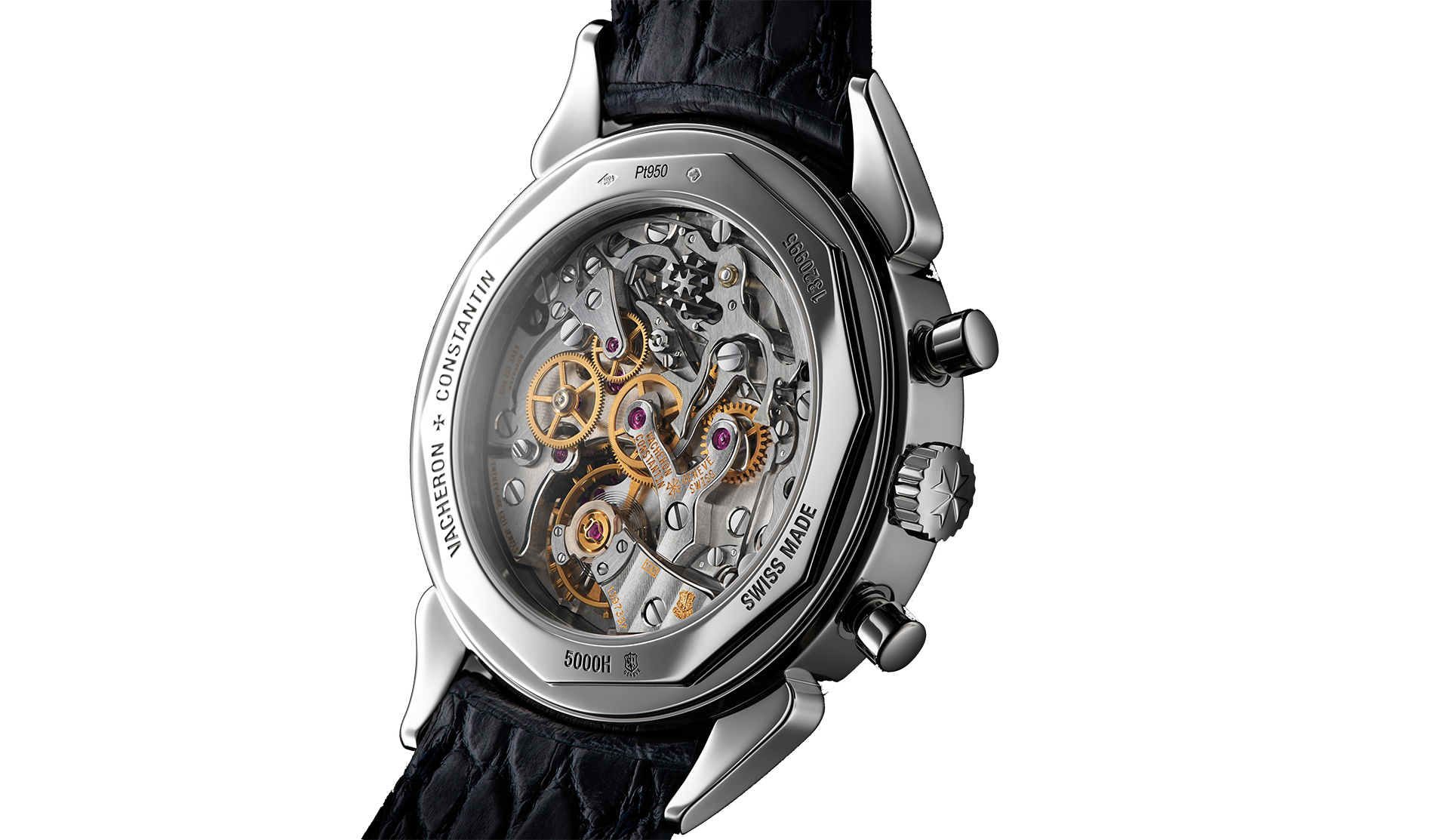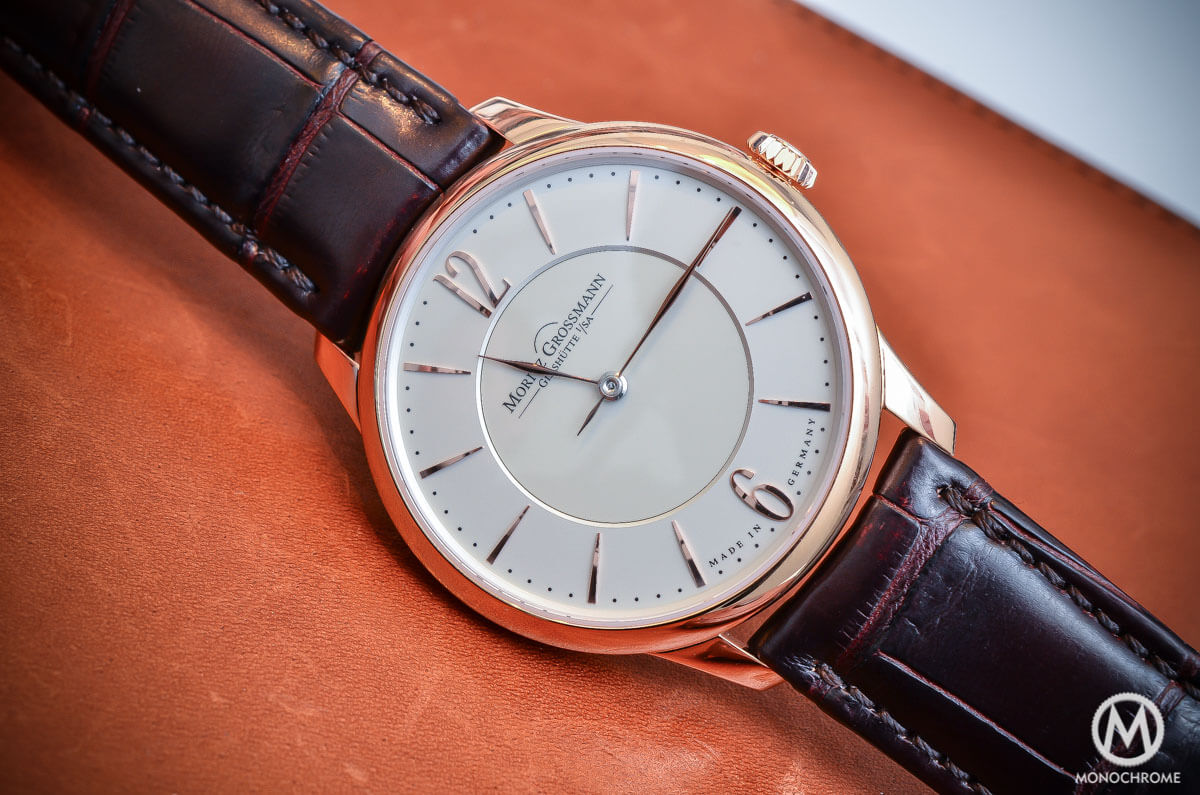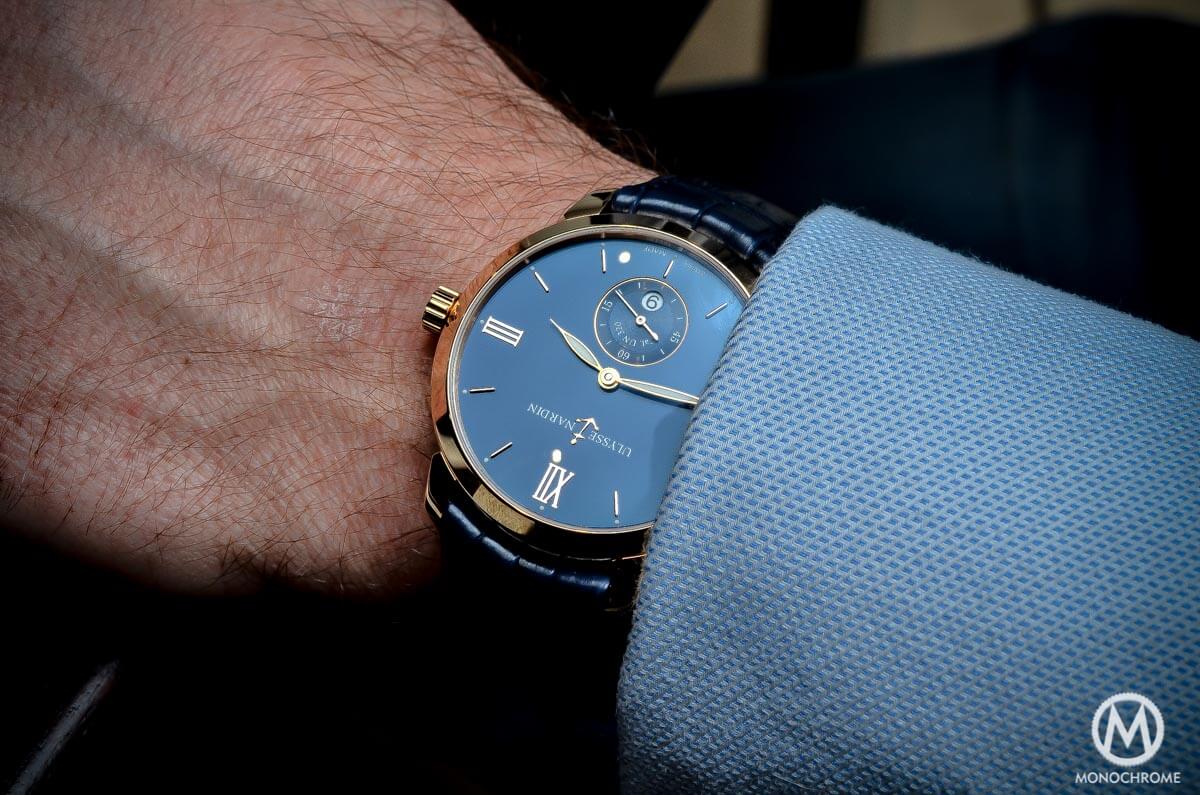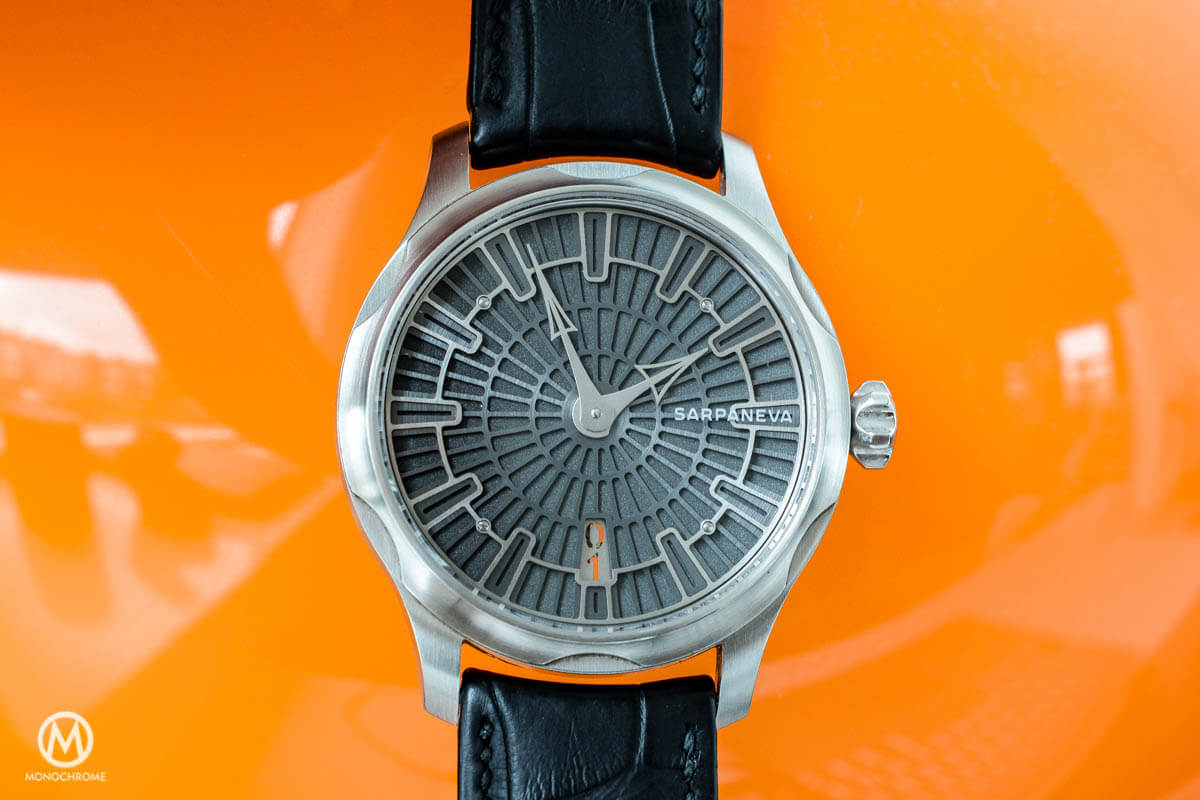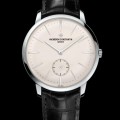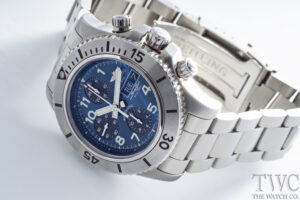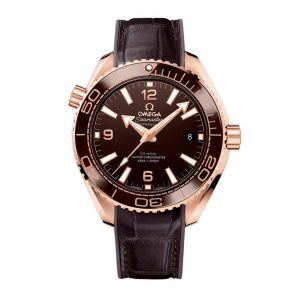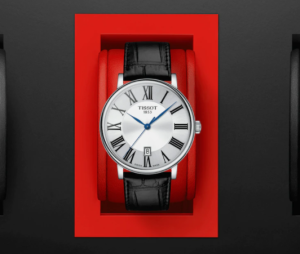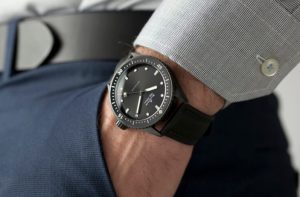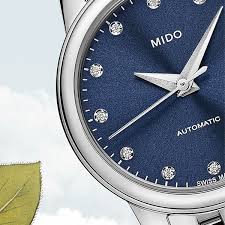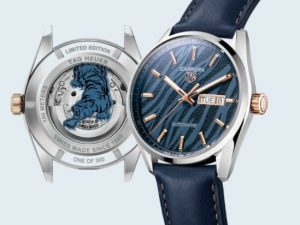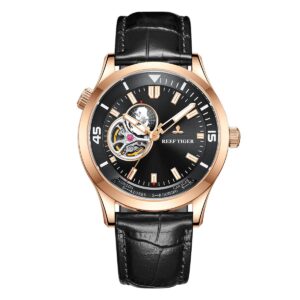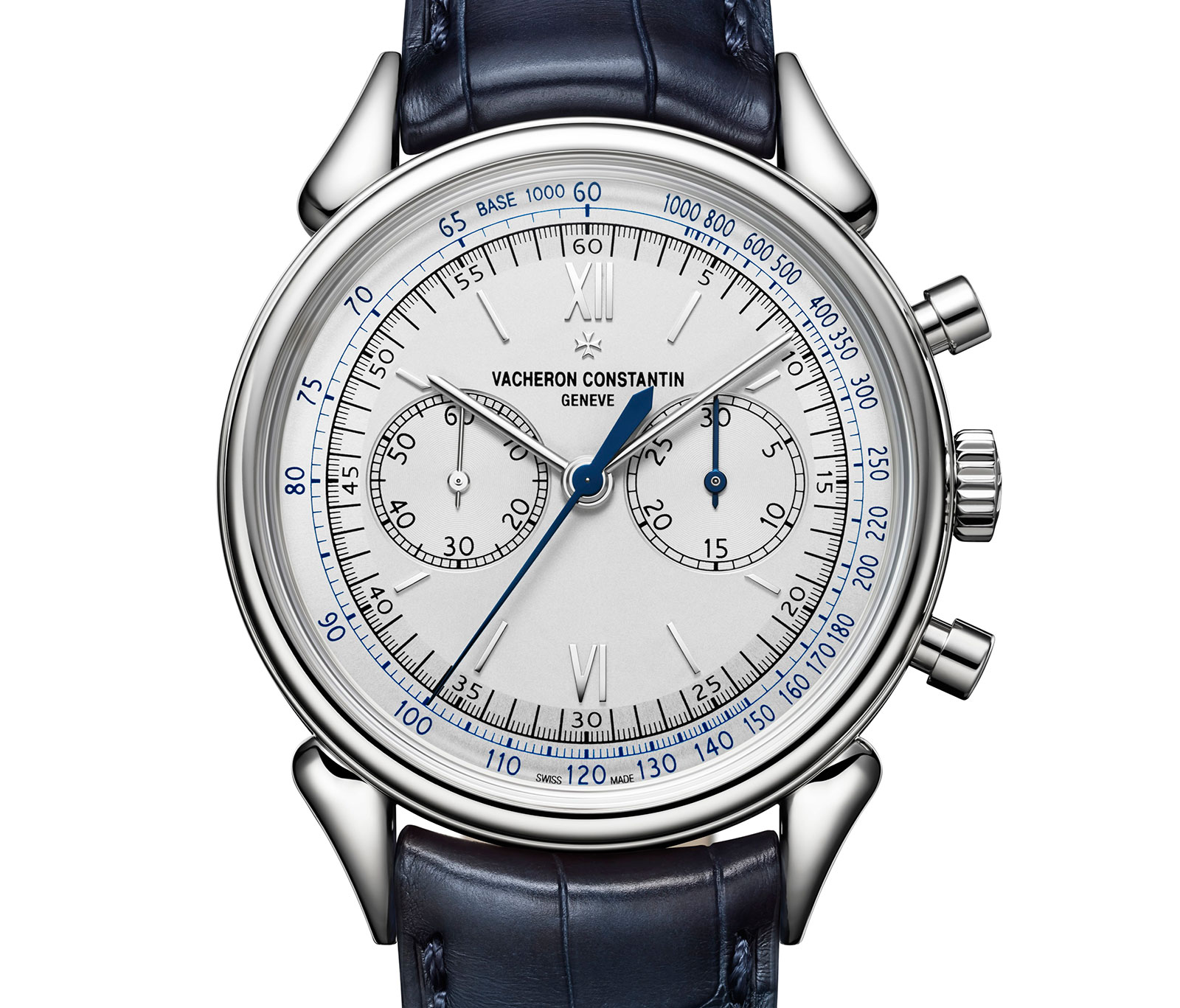
That’s no doubt that the Vacheron Constantin Historiques Cornes de Vache 1955 is a exquisite dress watch.
Fast forward to 2015 and Vacheron dazzled collectors and enthusiasts at January’s SIHH when it debuted its Harmony collection, which looked again to the company’s archives for inspiration for a fresh lineup of complicated watches, including a bewitching two-register chronograph called the Harmony Chronograph Small Model. That watch, with its cushion-shaped case, vaunted caliber 1142 and a 37 mm diameter, is just about right but it has a bezel studded with diamonds squarely aimed at a female market. Vacheronphiles wrung their hands at what could have been and patiently waited. They didn’t have to wait long though, as Vacheron chose the Asian market “Watches and Wonders” fair to debut the Cornes de Vache, which sits in the company’s Historiques family of vintage-inspired novelties.
Bumped up from its inspiration’s 35 mm case to 38.5, the new Cornes de Vache is rendered in polished platinum and its proportions and weight are near perfect in the hand and on the wrist. Those namesake “cow horn” lugs, whose name sounds so much more elegant in French, elevate this watch from a mere retro looker to a full-on stunner. The lugs are distinctively Vacheron Constantin, a slightly more curvy rendition of so-called “teardrop” lugs used by countless other brands back in the mid-20th century. Those lugs, added to a perfectly round case, make the watch appear to almost float as if a jewel in a setting. That’s not to say it is garish. In fact, in wearing it, the watch felt as at home under the sleeve of a flannel shirt as it would under a starched cuff.
Of course, part of the Cornes de Vache’s versatility is due to the presence of two round pushers on their protruding stalks, and a tachymetre scale that keep it from being strictly formal wear. Rectangular push-pieces are dressier and make no illusion that they’re up for anything too sporty, whereas the “mushroom” shape of these buttons seal better and offer a more tactile feel. The dial on the Cornes de Vache is as classic as they come and eminently satisfying to gaze upon. 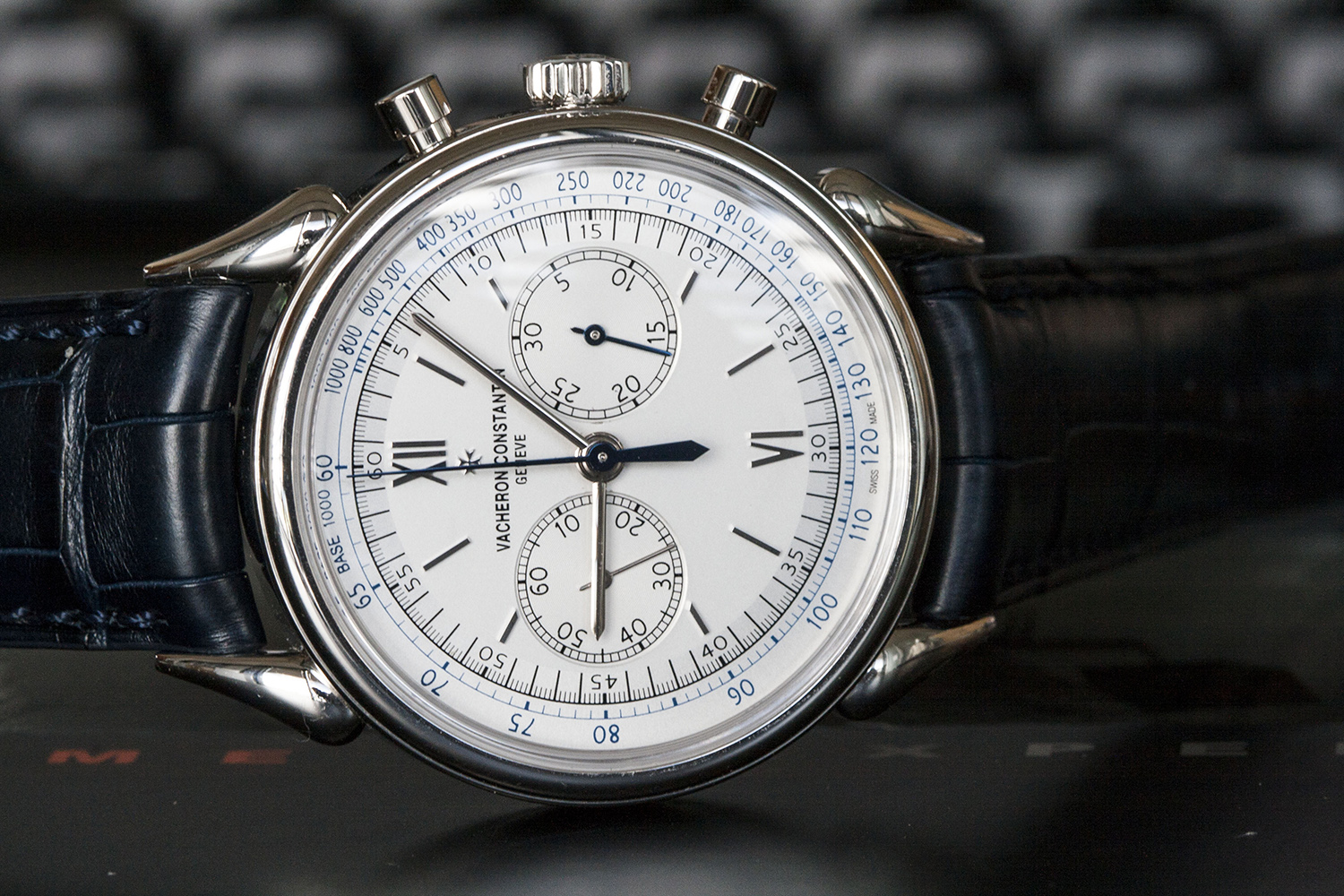
The instrument-like blue printed tachy scale and railroad track sub-dials provide the perfect counterweight to the opulence of those lugs. Yes, you could drive your vintage E-Type directly from the opera to the racetrack and still time lap splits with the same watch on your wrist. Furthering the utilitarian cues are the blued chronograph hands – sweep seconds and minutes – which differ from the timekeeping running seconds and hour and minute hands, which are polished silver to match the applied Roman numerals on the dial.
At 10.9 mm thick, this isn’t the slimmest chronograph around but is entirely in proportion with the watch’s diameter. The movement inside is that same caliber 1142 from the Harmony Chronograph, a motor that started life as a Lemania 2310 but then considerably modified by Vacheron. For all the talk of in-house movements, this is clearly a case where the merits of the old practice of etablissage is perfectly illustrated. Vacheron took a well-respected, high quality chronograph movement and adapted it for its own use, increasing the oscillating rate to 3 Hz, endowing it with a free-sprung balance and decorating it to Vacheron’s usual high standards, including the company’s Maltese Cross logo discretely positioned atop the chronograph mechanism’s column wheel. This isn’t Lange-level decorating but tastefully subtle and refined bridge beveling and finishing entirely fitting a watch of this stature.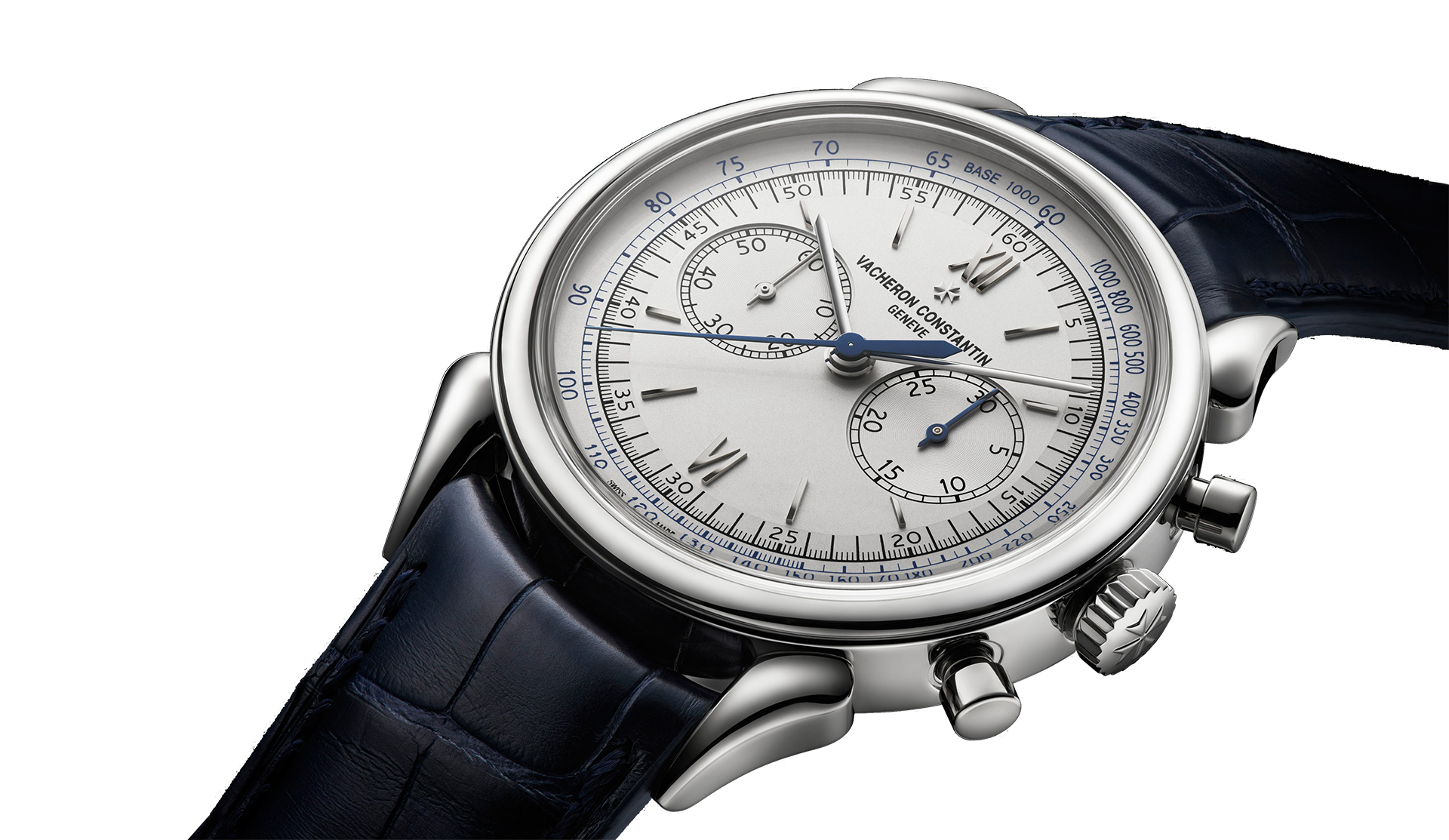
Functionally, the chronograph is as delightful to use as you would imagine and expect from a high-end hand-cranker. Winding is smooth and easy thanks to the well-fluted and slightly oversized crown and push-piece action has just the right firmness. The Lemania 2310 ébauche had its origins in the late 1940s and has been found in countless chronographs, from Speedmasters to Pateks and everything in between. There is a reason it’s lasted this long and been used by so many – it is an excellent movement and altogether fitting in a watch that takes inspiration from the great era of hand-wound chronographs, when that caliber was first being built.
Vacheron has been on a roll these days. First, the Harmony collection, which debuted to almost unanimous praise. Then September’s announcement of the ref 57260 pocketwatch which, with 57 complications, is the world’s most complicated watch. And now the Historiques Cornes de Vache 1955. It seems like Vacheron is taking its share of the spotlight, showing us what those two and a half centuries mean in terms of design and watchmaking. 